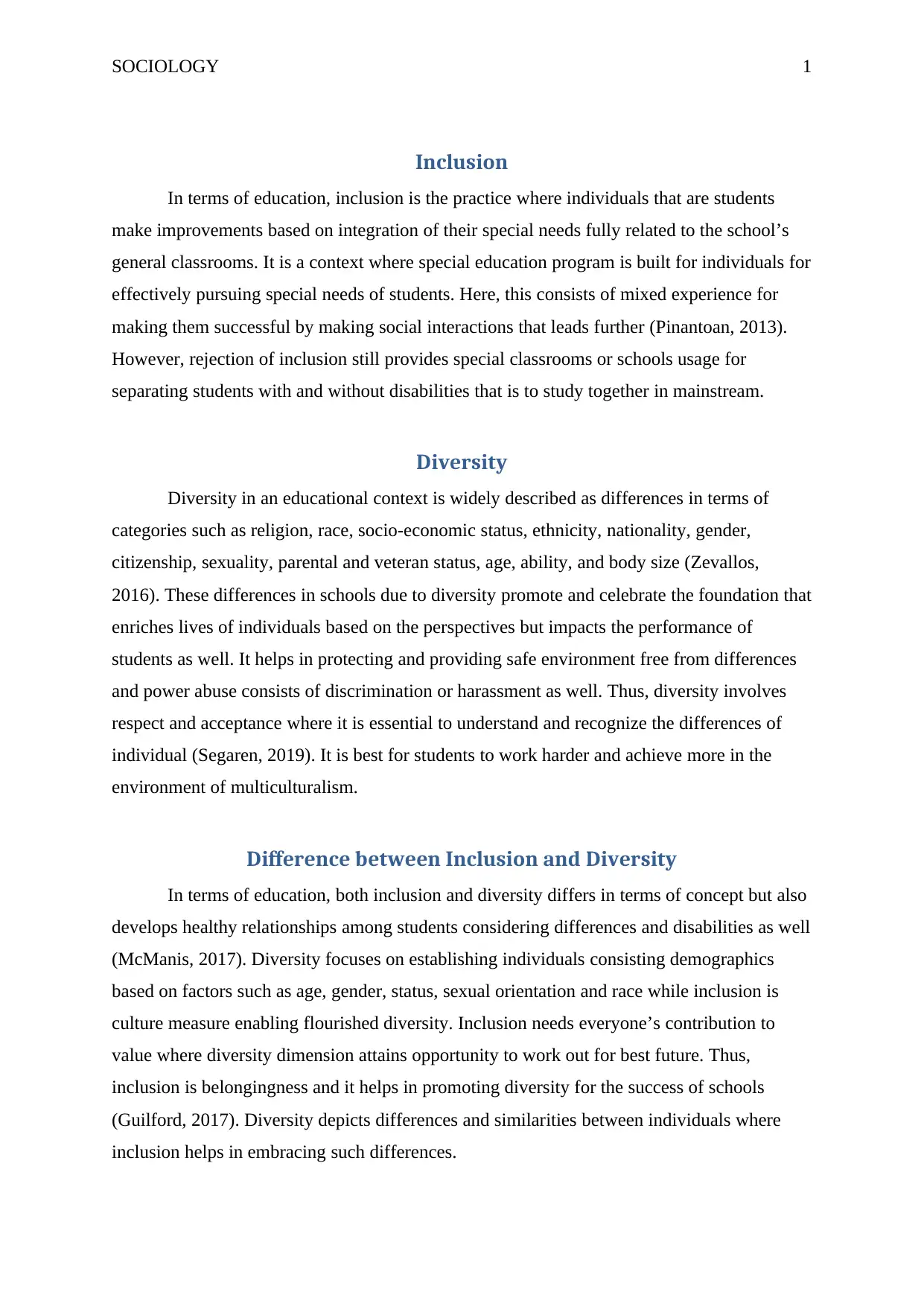Sociology Assignment: Analyzing Inclusion and Diversity in Education
VerifiedAdded on 2022/08/16
|4
|534
|36
Essay
AI Summary
This sociology assignment delves into the concepts of inclusion and diversity within an educational context. It defines inclusion as the integration of students with special needs into mainstream classrooms, emphasizing the importance of social interactions and addressing potential barriers. Diversity is presented as encompassing a wide range of individual differences, including race, gender, and socioeconomic status, and its significance in creating a respectful and enriching learning environment is highlighted. The assignment differentiates between inclusion and diversity, emphasizing that inclusion promotes diversity by embracing individual differences. The assignment also references various sources, including academic journals and educational websites, to support the arguments and provide a comprehensive understanding of these critical educational concepts. The paper focuses on the definitions, importance, and practical implications of inclusion and diversity in educational settings, providing valuable insights into creating supportive and inclusive environments.
1 out of 4










![[object Object]](/_next/static/media/star-bottom.7253800d.svg)